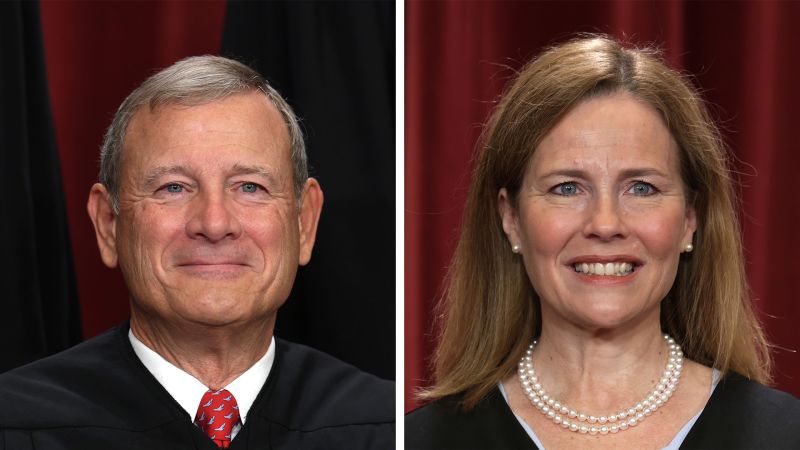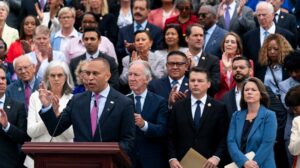
Chief Justice John Roberts often downplays his influence among his eight colleagues on the U.S. Supreme Court. Speaking to a group of federal judges recently, Roberts remarked, “You can’t fire people if they don’t follow you. You can’t cut their pay.” Yet, despite his modesty, Roberts wields significant power through his ability to assign opinions when he is in the majority—a position he occupied more than any other justice this term.
This power is crucial because the rationale behind a Supreme Court decision sets a precedent for future cases, influencing lower court judges through its rhetoric and tone. The author of an opinion not only steers the law but also gains personal prestige. Completing his 20th session on the court, Roberts has frequently reserved the most pivotal cases for himself, including those involving presidential powers. However, he has also used his assignment power strategically to influence and reward colleagues, sometimes challenging ideological expectations.
The Strategic Assignment of Opinions
Last Friday, Roberts surprised many by assigning Justice Amy Coney Barrett the opinion in a highly anticipated case. This case effectively overturned numerous lower-court orders blocking former President Donald Trump’s second-term policies, including his attempt to rescind birthright citizenship for babies born in the U.S. to non-citizen parents. The assignment was a significant one for Barrett, who had faced criticism from Trump and his supporters for perceived disloyalty despite her conservative record.
The choice of Barrett immediately mitigated Trump’s criticism. “I just have great respect for her,” Trump said after the decision in Trump v. Casa was issued. “I always have. And her decision was brilliantly written today—from all accounts.” For Roberts, assigning Barrett the opinion also strengthened his alliance with a pivotal justice whom liberals have been trying to sway toward the center.
Roberts’ Influence on Court Dynamics
Like the eight associate justices, Roberts holds one vote. However, he dictates much of the court’s agenda by overseeing oral arguments and managing the closed-door conferences where justices discuss and vote on cases. By tradition, the most senior justice in the majority assigns the opinion, and Roberts, enjoying seniority over all justices, has often found himself in this position.
Roberts was in the majority more often than any other justice last session, determining the author of 54 of the 56 signed opinions. This is indeed the Roberts Court, both colloquially and in reality. He is rarely in dissent, with notable exceptions being the 2015 decision declaring a right to same-sex marriage and the 2022 decision striking down federal abortion rights.
Historical Comparisons
All modern chief justices have used the assignment power to influence outcomes. Chief Justice Warren Burger, who served from 1969 to 1986, was known to switch his vote to ensure he was in the majority and could control the opinion. Burger often favored colleagues who shared his right-wing ideology, such as then-Associate Justice William Rehnquist, for whom Roberts clerked during the 1980-81 term.
Rehnquist, elevated to chief justice by President Ronald Reagan in 1986, was less manipulative but focused on speed and efficiency, rewarding justices who wrote quickly and avoided tangents. Justice Sandra Day O’Connor, who knew Rehnquist from their time at Stanford Law School, often finished her opinions first to avoid being sidelined.
Roberts’ Legacy and Future Implications
Roberts, who succeeded Rehnquist in 2005 after being appointed by President George W. Bush, usually keeps the standout cases, particularly those involving executive branch clashes. Until last Friday, he had authored important decisions centered on Trump, such as the 2018 travel ban decision and the 2020 controversies over Trump’s business dealings.
Roberts has rewarded restraint and crossover votes from ideological camps, sometimes assigning cases to dispel the notion of a divided court. For example, he assigned liberal Justice Ketanji Brown Jackson the court’s decision in a “reverse discrimination” case, and Justice Sonia Sotomayor a church-state clash that favored religious interests.
Statistics compiled by SCOTUSblog show that Barrett and fellow conservatives Clarence Thomas and Brett Kavanaugh each had seven opinions last session, while Roberts, Sotomayor, Samuel Alito, Elena Kagan, and Neil Gorsuch had six, and Jackson had five. On the left, senior Justice Sotomayor controls who writes the main dissent when liberals lose, often holding onto the dissenting opinions in significant cases.
Barrett’s Rising Influence
A former Notre Dame law professor, Barrett became Trump’s third appointee during his first term, named in 2020 after Justice Ruth Bader Ginsburg’s death. Barrett’s cautious yet effective approach has given her an outsized role among the nine justices. She sometimes casts the decisive vote or drafts compromise rationales, as seen in an Idaho abortion controversy last year.
Roberts has conspicuously assigned Barrett major decisions, such as a dispute over Native American rights, which she upheld on a 7-2 vote. Her opinion endorsed Native rights, surprising some commentators with its progressive tone. In more recent years, Barrett has guided compromises as the crucial fifth vote. Yet in Friday’s Trump dispute, her vote was one of six, and her approach mirrored what Roberts might have adopted if he’d held onto the case.
Barrett’s opinion restricted the authority of U.S. district court judges to impose nationwide injunctions, a victory for Trump’s legal team. However, the court left open the possibility for broad remedies through class action lawsuits. In her written opinion, Barrett drew from Justice Antonin Scalia’s originalist method, looking to early American history to argue against universal injunctions.
As Roberts continues to navigate the complexities of Supreme Court dynamics, his strategic assignments and alliances will likely shape the court’s direction in the years to come. His ability to balance ideological divides while maintaining his influence underscores his role as a pivotal figure in the American judicial system.






